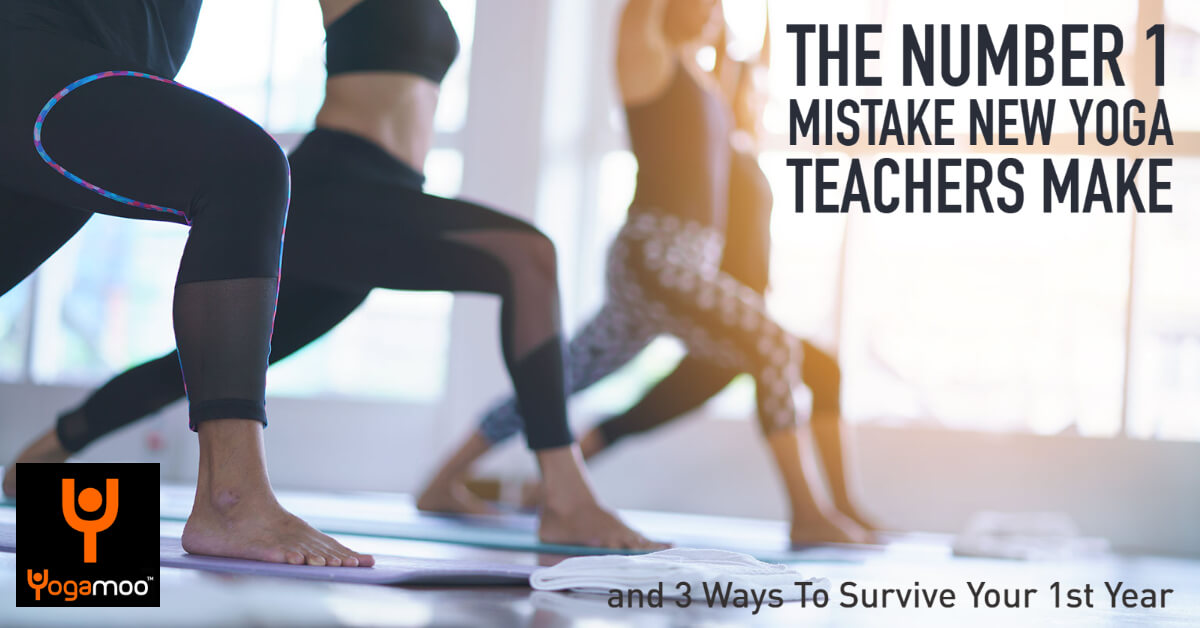There is one mistake I see most new yoga teachers make, and it is nothing to feel bad about. In fact, it makes perfect sense. In this article, I am going to share with you what this mistake is, why it is unlikely to lead to success, and three ways to jump start your yoga career.
We love yoga. Period. That’s why we got so deeply into it. Taking several classes a week, travelling to retreats, taking workshops with the best teachers around, and finally, shelling out a lot of hard-earned cash for an intensive teacher training experience that was nothing short of life changing.
Is it your dream to make a living teaching yoga —to share your love for this transformational practice with as many people as possible, make a difference in the world and be well paid for this meaningful service?
I totally relate!
Here’s the thing though: every year, more and more people buy into this dream. Thousands of new teachers graduate from yoga teacher training every year in the USA alone. How many of these bright-eyed hopefuls are going to get a job at a yoga studio?
Think about: we fall in love with yoga at our local studio, where we learn from a successful teacher who usually has a prime time slot, and brings in anywhere from, say, 20 to maybe as many as 80 or 100 students per class. Naturally, we try to draw a straight line from graduating teacher training to being in that situation. We imagine going from being a student in THAT class, to being the teacher. Simple.
But in fact, it is anything but simple, and finding your way into teaching a busy studio class requires a complex combination of time, dedication, talent, contacts and luck.
So this is the mistake: a lot of new teachers follow the strategy of targeting a few specific yoga studios, submitting their resumes and then waiting for a call as they prepare at home to become the next prime time teacher of a mat-to-mat sweat-and-love fest.
But, (sadly) usually nothing happens.
So what next? Do you just give up, bemoan the state of saturated yoga business, complain about overly commercialised studios, big ego teachers, and how tough it is to break in?
Well, OK, maybe for a few minutes, if you must! But, when you’re done, I have three suggestions born of my 20 years teaching yoga professionally and mentoring the new teachers I train:
1) Warm up to the idea of teaching yoga 1 to 1. Here’s why: you can get a private yoga business up and running in much less time, it requires far less students, and you will earn an hourly rate between two and four times more than you would starting out at a studio. With a little time, effort and money invested in:
a) A few nice photos
b) A simple two or three page website, and
c) Some business cards,
You will be ready to go. (A future article will share tips on how to find your private clients and establish that business for yourself so you can also play the long game of studio classes, workshops and retreats without being stressed about paying your bills.)
2) Consider having a second stream of income for at least your first year. Don’t quit your day job —or, if you can, transition it into part time. Alternatively, think about what other skills you could utilise. The best would be another service you can offer that will eventually crossover nicely with yoga. Things like massage, reflexology, aromatherapy, online meditation courses or life coaching are obvious choices, but if you think about it you can find ways to angle many different services to the yoga demographic. For example, I know web and graphic designers who offer special packages to people who have spiritually aware or environmentally conscious business. I also know hairdressers who promote through their yoga studio.
3) Take a ”long view.” Use these first two strategies to ease up on putting pressure on yourself and being stressed about money as you’re getting started. It takes time! Most new teachers start on the sub list, if you do well, show up on time, get to know the staff and students, and make yourself available to teach as much as possible, this may lead to teaching the donation, community, lunch time or first timer introduction class. Do this well in turn, and you may find yourself with a regular class on the schedule, which one day may turn into having one of the coveted prime time classes outside of regular business hours.
As you take this gradual journey, here’s one more bonus tip: start building your email list right now and keep doing it for the rest of your career. When you are ready to teach your first workshops and retreats a year or two from now, you want to be able to reach out and tell everyone who has ever enjoyed your teaching.


Leave A Comment